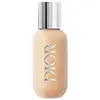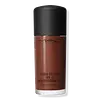What's inside
What's inside
 Key Ingredients
Key Ingredients

 Benefits
Benefits

 Concerns
Concerns

 Ingredients Side-by-side
Ingredients Side-by-side

Water
Skin ConditioningC9-12 Alkane
SolventPropanediol
SolventCaprylic/Capric Triglyceride
MaskingUndecane
EmollientPolyglyceryl-6 Polyricinoleate
EmulsifyingGlycerin
HumectantTridecane
PerfumingCellulose
AbsorbentTrimethylsiloxysilicate
EmollientLecithin
EmollientAlcohol
AntimicrobialPentylene Glycol
Skin ConditioningPolyglyceryl-10 Decaisostearate
EmollientSilica
AbrasivePolyglyceryl-2 Isostearate
EmulsifyingStearalkonium Hectorite
Gel FormingDisteardimonium Hectorite
StabilisingParfum
MaskingHydroxypropyl Starch
Sodium Chloride
MaskingSodium Myristoyl Glutamate
CleansingPropylene Carbonate
SolventCoco-Caprylate/Caprate
EmollientHydroxyacetophenone
AntioxidantSodium Benzoate
MaskingSqualane
EmollientAluminum Hydroxide
EmollientTocopherol
AntioxidantStearoyl Glutamic Acid
CleansingPolyhydroxystearic Acid
EmulsifyingHyaluronic Acid
HumectantCitric Acid
BufferingIsostearic Acid
CleansingPolyglyceryl-3 Polyricinoleate
EmulsifyingCI 77891
Cosmetic ColorantCI 77491
Cosmetic ColorantCI 77492
Cosmetic ColorantCI 77499
Cosmetic ColorantWater, C9-12 Alkane, Propanediol, Caprylic/Capric Triglyceride, Undecane, Polyglyceryl-6 Polyricinoleate, Glycerin, Tridecane, Cellulose, Trimethylsiloxysilicate, Lecithin, Alcohol, Pentylene Glycol, Polyglyceryl-10 Decaisostearate, Silica, Polyglyceryl-2 Isostearate, Stearalkonium Hectorite, Disteardimonium Hectorite, Parfum, Hydroxypropyl Starch, Sodium Chloride, Sodium Myristoyl Glutamate, Propylene Carbonate, Coco-Caprylate/Caprate, Hydroxyacetophenone, Sodium Benzoate, Squalane, Aluminum Hydroxide, Tocopherol, Stearoyl Glutamic Acid, Polyhydroxystearic Acid, Hyaluronic Acid, Citric Acid, Isostearic Acid, Polyglyceryl-3 Polyricinoleate, CI 77891, CI 77491, CI 77492, CI 77499
Ethylhexyl Methoxycinnamate 2.5%
UV AbsorberTitanium Dioxide 1%
Cosmetic ColorantWater
Skin ConditioningCyclopentasiloxane
EmollientPEG-10 Dimethicone
Skin ConditioningButylene Glycol
HumectantTrimethylsiloxysilicate
EmollientDimethicone
EmollientMagnesium Sulfate
Laminaria Saccharina Extract
Skin ProtectingAlgae Extract
EmollientTocopheryl Acetate
AntioxidantSodium Hyaluronate
HumectantTocopherol
AntioxidantLecithin
EmollientHydrogenated Lecithin
EmulsifyingXanthan Gum
EmulsifyingSorbitan Sesquioleate
EmulsifyingMethoxy Amodimethicone/Silsesquioxane Copolymer
Skin ConditioningLaureth-7
EmulsifyingDipropylene Glycol
HumectantDimethicone/PEG-10/15 Crosspolymer
Dimethicone/PEG-10 Crosspolymer
EmollientPEG/PPG-18/18 Dimethicone
EmulsifyingDisteardimonium Hectorite
StabilisingSilica
AbrasiveDimethicone Crosspolymer
Emulsion StabilisingTriethoxycaprylylsilane
Propylene Carbonate
SolventPentaerythrityl Tetra-Di-T-Butyl Hydroxyhydrocinnamate
AntioxidantSorbic Acid
PreservativeChloroxylenol
AntimicrobialPhenoxyethanol
PreservativeCI 77891
Cosmetic ColorantIron Oxides
Chromium Oxide Greens
Ethylhexyl Methoxycinnamate 2.5%, Titanium Dioxide 1%, Water, Cyclopentasiloxane, PEG-10 Dimethicone, Butylene Glycol, Trimethylsiloxysilicate, Dimethicone, Magnesium Sulfate, Laminaria Saccharina Extract, Algae Extract, Tocopheryl Acetate, Sodium Hyaluronate, Tocopherol, Lecithin, Hydrogenated Lecithin, Xanthan Gum, Sorbitan Sesquioleate, Methoxy Amodimethicone/Silsesquioxane Copolymer, Laureth-7, Dipropylene Glycol, Dimethicone/PEG-10/15 Crosspolymer, Dimethicone/PEG-10 Crosspolymer, PEG/PPG-18/18 Dimethicone, Disteardimonium Hectorite, Silica, Dimethicone Crosspolymer, Triethoxycaprylylsilane, Propylene Carbonate, Pentaerythrityl Tetra-Di-T-Butyl Hydroxyhydrocinnamate, Sorbic Acid, Chloroxylenol, Phenoxyethanol, CI 77891, Iron Oxides, Chromium Oxide Greens
 Reviews
Reviews

Ingredients Explained
These ingredients are found in both products.
Ingredients higher up in an ingredient list are typically present in a larger amount.
Ci 77891 is a white pigment from Titanium dioxide. It is naturally found in minerals such as rutile and ilmenite.
It's main function is to add a white color to cosmetics. It can also be mixed with other colors to create different shades.
Ci 77891 is commonly found in sunscreens due to its ability to block UV rays.
Learn more about CI 77891Disteardimonium Hectorite comes from the clay mineral named hectorite. It is used to add thickness to a product.
It can also help stabilize a product by helping to disperse other ingredients.
Hectorite is a rare, white clay mineral.
Learn more about Disteardimonium HectoriteLecithin is a term for a group of substances found in the cell membranes of plants, animals, and humans. They are made up of mixture of phospholipids.
This ingredient has emollient and emulsifying properties.
As an emollient, lecithen helps soften the skin and creates a barrier to keep moisture in.
As an emulsifier, it also helps prevent water and oil ingredients from separating. Lecithin can also help ingredients be better absorbed by the skin.
This is because the phospholipids in lecithin produce liposomes. Liposomes help other ingredients get through the skin barrier.
Depending on the source of this ingredient, lecithin may not be fungal acne safe. This is because some sources of lecithin come from soybean oil, which may feed the malassezia yeast that feeds fungal acne.
We recommend reaching out to the brand you are purchasing from to inquire about the source of their lecithin.
Some other names for this ingredient include soy lecithin and deoiled soy lecithin.
Learn more about LecithinThis ingredient is a solvent. It helps dissolve active ingredients and alter the texture of products.
Propylene Carbonate is commonly used in makeup and with clay, such as montmorillonite or bentonite.
Studies show this ingredient to be safe for cosmetics. When it is undiluted, it can cause skin irritation. (It is always diluted in skincare and makeup). This ingredient is water-soluble.
Propylene Carbonate is created from propylene glycol and carbonic acid.
Learn more about Propylene CarbonateSilica, also known as silicon dioxide, is a naturally occurring mineral. It is used as a fine, spherical, and porous powder in cosmetics.
Though it has exfoliant properties, the function of silica varies depending on the product.
The unique structure of silica enhances the spreadability and adds smoothness, making it a great texture enhancer.
It is also used as an active carrier, emulsifier, and mattifier due to its ability to absorb excess oil.
In some products, tiny microneedles called spicules are made from silica or hydrolyzed sponge. When you rub them in, they lightly polish away dead skin layers and enhance the penetration of active ingredients.
Learn more about SilicaTocopherol (also known as Vitamin E) is a common antioxidant used to help protect the skin from free-radicals and strengthen the skin barrier. It's also fat soluble - this means our skin is great at absorbing it.
Vitamin E also helps keep your natural skin lipids healthy. Your lipid skin barrier naturally consists of lipids, ceramides, and fatty acids. Vitamin E offers extra protection for your skin’s lipid barrier, keeping your skin healthy and nourished.
Another benefit is a bit of UV protection. Vitamin E helps reduce the damage caused by UVB rays. (It should not replace your sunscreen). Combining it with Vitamin C can decrease sunburned cells and hyperpigmentation after UV exposure.
You might have noticed Vitamin E + C often paired together. This is because it is great at stabilizing Vitamin C. Using the two together helps increase the effectiveness of both ingredients.
There are often claims that Vitamin E can reduce/prevent scarring, but these claims haven't been confirmed by scientific research.
Learn more about TocopherolThis silicone is an emollient. Emollients create a thin film on the skin to prevent moisture from escaping.
It is not soluble in water and helps increase water-resistance in products.
According to a manufacturer, it can blend seamlessly with silicone oils, such as Cyclopentasiloxane.
Learn more about TrimethylsiloxysilicateWater. It's the most common cosmetic ingredient of all. You'll usually see it at the top of ingredient lists, meaning that it makes up the largest part of the product.
So why is it so popular? Water most often acts as a solvent - this means that it helps dissolve other ingredients into the formulation.
You'll also recognize water as that liquid we all need to stay alive. If you see this, drink a glass of water. Stay hydrated!
Learn more about Water